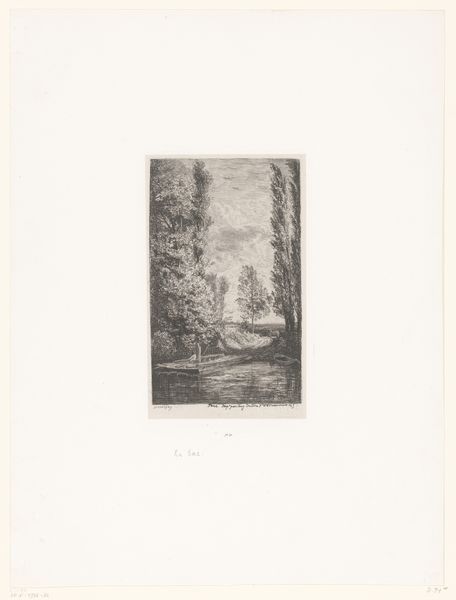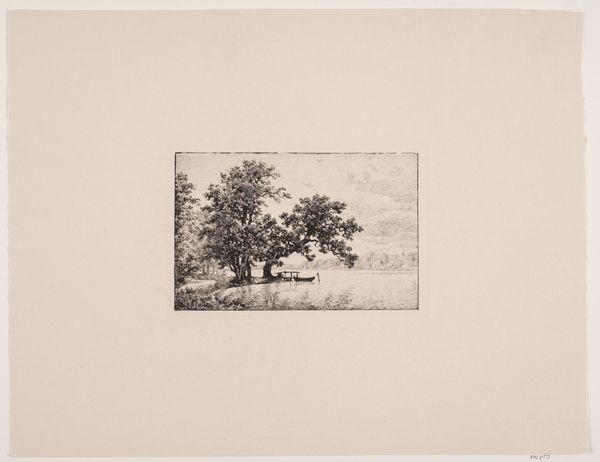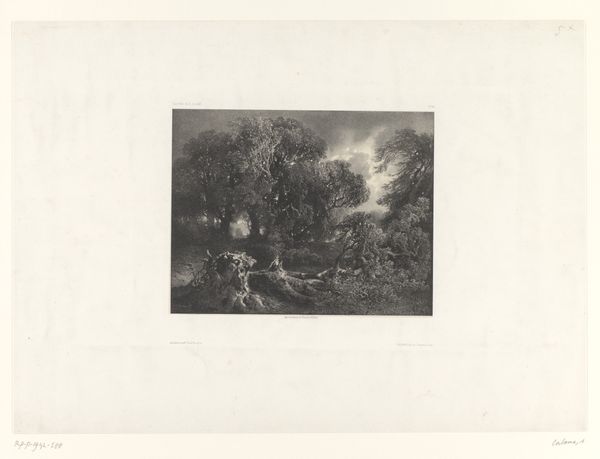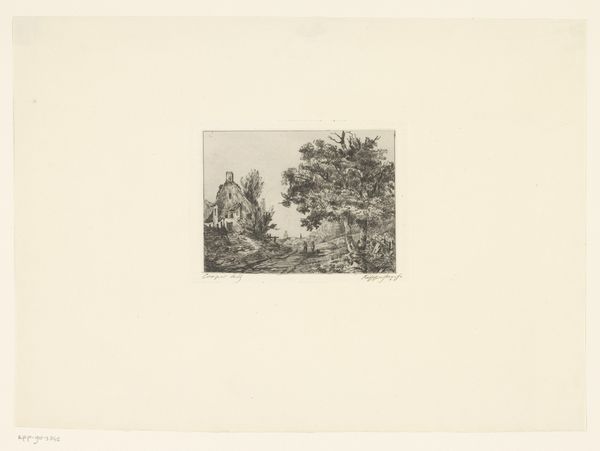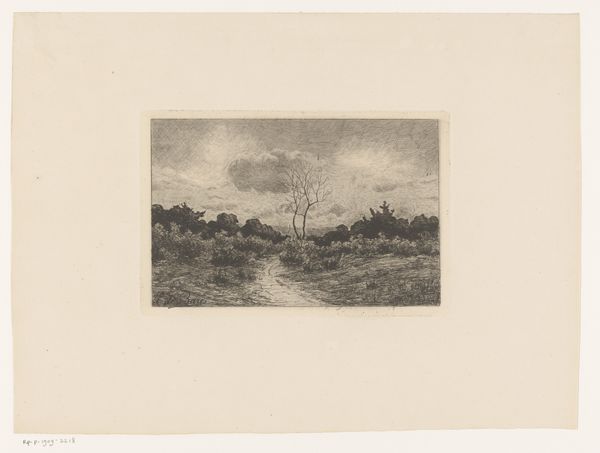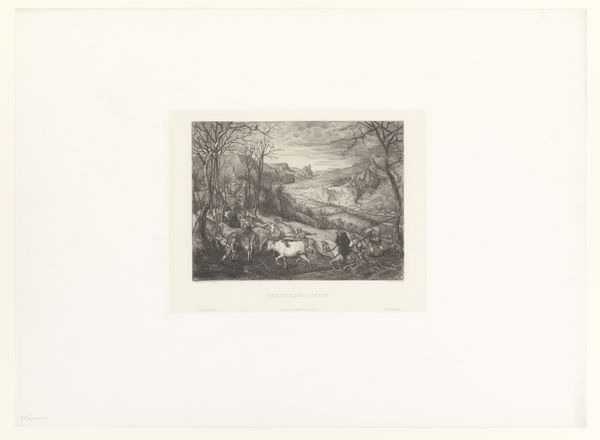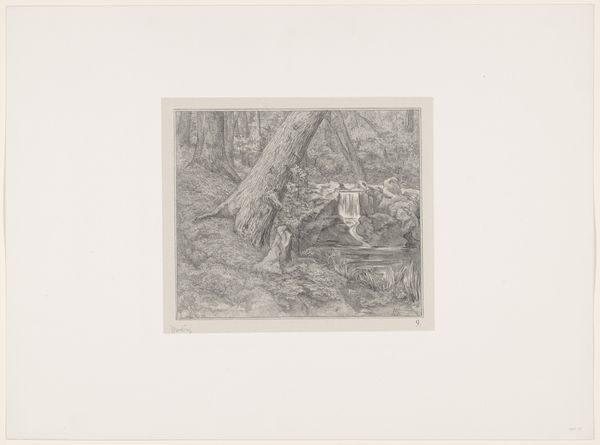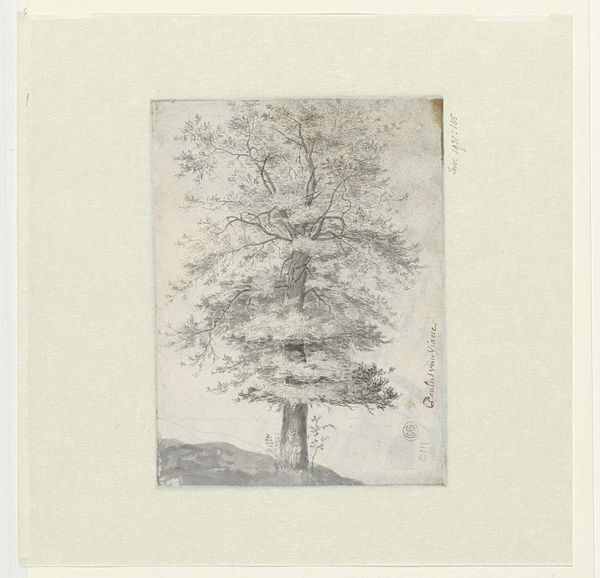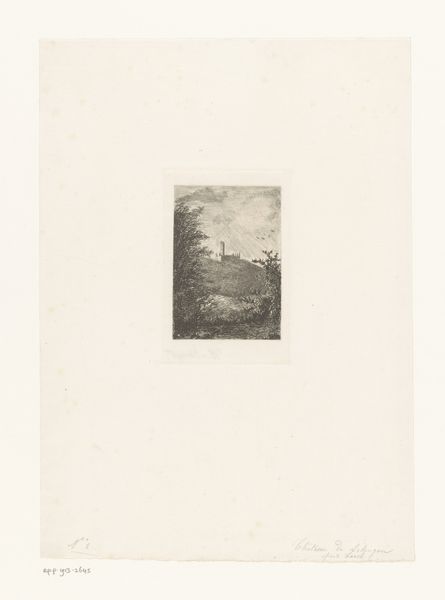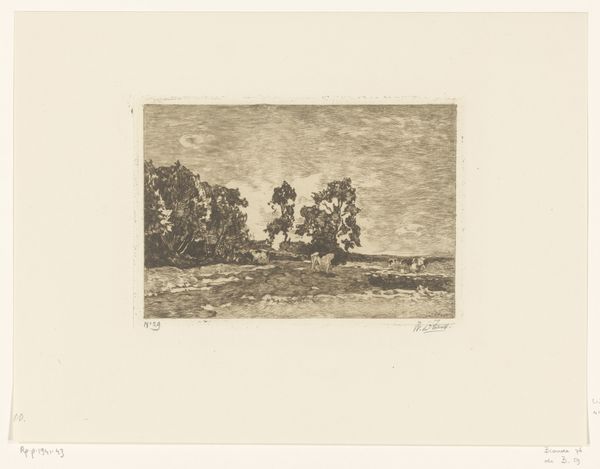
Dimensions: height 221 mm, width 268 mm
Copyright: Rijks Museum: Open Domain
Editor: This is "Italian Landscape with Draftsman," a drawing by Christiaan Lodewijk van Kesteren, created around 1861. I'm immediately struck by how staged it feels. There's this little drama of the artist sketching, but also this broader picturesque landscape in the distance. What do you make of it? Curator: It's fascinating how Van Kesteren positions the act of artistic creation itself within a broader narrative of romanticism and the picturesque. How might we interpret this 'staging' you observed in relation to the developing art market of the 19th century? It highlights the consumption of Italy as an artistic site, right? A destination made worthy by the artistic act of observation. Editor: So, is it kind of performative? Like he's showing the *process* of creating art for an audience who's interested in that experience, and Italy as a 'must-see' spectacle? Curator: Exactly. And note how the drawing emphasizes certain elements. The figures are strategically placed, drawing your eye towards this cultivated vista. Think about the institutional and societal values at the time; the rise of landscape painting coincided with growing nationalism and the celebration of a nation's natural beauty as a point of pride. Editor: It feels like the drawing is selling more than just a scene – it's selling an idea about what art should represent and where it should be made. Is it cynical to think about it like that? Curator: Not at all! Understanding these social and cultural forces is critical to a complete interpretation. It reframes our view of art's 'public role,' doesn’t it? It makes me wonder about the influence of these constructed scenes on contemporary visual culture and what that means. Editor: I never thought of landscape drawing as political, but seeing how it's tied to things like national identity and art market really changes how I look at it. Curator: Precisely! Analyzing artwork as part of a greater visual and historical dialogue opens up rich opportunities to consider the power and influence of art, museums and social context, even within something as seemingly passive as a landscape drawing.
Comments
No comments
Be the first to comment and join the conversation on the ultimate creative platform.


